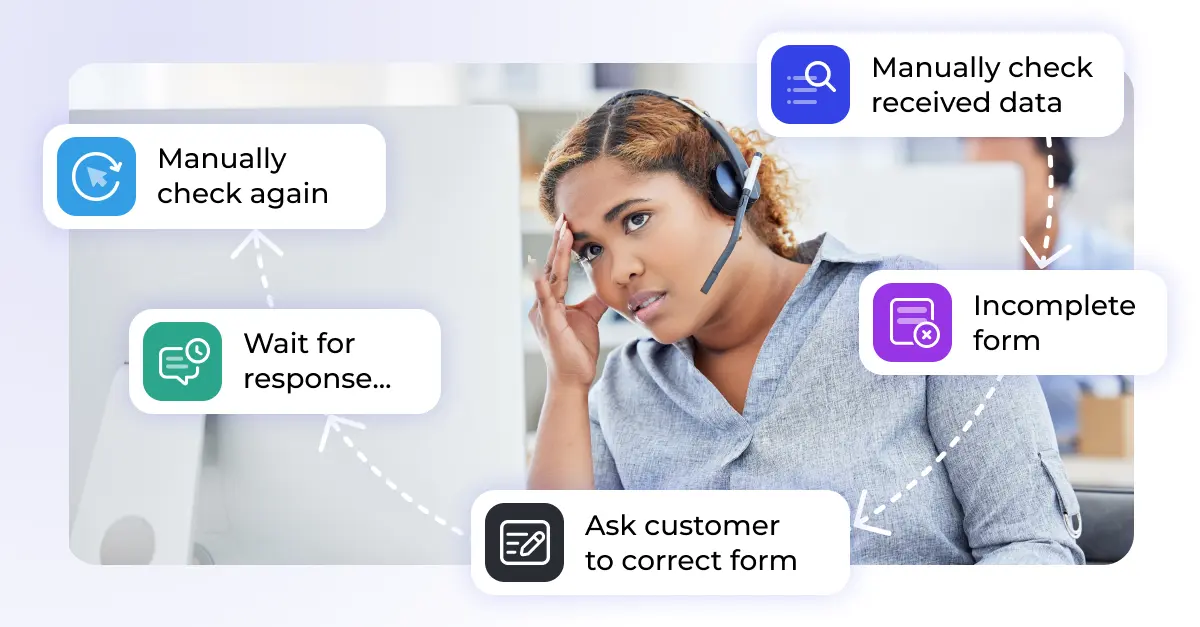Every great business relies on one key element: exceptional customer service. But sometimes waiting for customers to come to you with problems is not enough. To succeed, you need a proactive customer service strategy—anticipating customer needs, solving issues before they arise, and creating delightful experiences that keep customers coming back.
This article dives into what a proactive customer support is, why it’s critical for modern businesses, and how you can implement it. We’ll also highlight how industry leaders like Amazon, Airbnb, and Spotify are implementing it and share tips to help you create a winning strategy.
What is a proactive customer service strategy?
It’s a strategy designed to address issues and resolve problems before customers are even aware of them. Rather than waiting to respond to complaints, this approach focuses on foreseeing customer needs and providing prompt solutions and support.
Examples of a proactive customer support include:
- Sending reminders about product renewals or account changes.
- Sharing tips or guides to help customers make the most of your product.
- Informing customers of potential delays or disruptions before they notice.
Proactive strategies are designed to build trust and show customers that you value their time and experience. According to Zendesk, this approach reduces customer effort and increases satisfaction, making it a cornerstone of a successful customer service strategy.

Why is customer feedback so important?
Customer feedback is the backbone of any effective customer support. It provides valuable insights into what your customers love, what frustrates them, and where you can improve.
Here’s why feedback matters:
- 63% of customers say businesses should listen more to their feedback.
- 75% of customers will spend more with companies that focus on giving them a great experience.
By paying attention to feedback, you can:
- Fix problems before they grow.
- Predict what customers might need in the future.
- Keep improving your service over time.

The three types of feedback every customer service strategy needs
To develop an effective approach to customer service, it’s important to understand the different types of feedback.
Direct feedback:
This includes surveys, reviews, and comments customers share directly with you. It provides clear and actionable insights.
Indirect feedback:
Data from customer behavior, such as purchase patterns, website clicks, and product usage, helps you understand preferences and habits.
Inferred feedback:
This comes from analyzing online reviews, social media posts, and support tickets. It gives you a big-picture view of customer sentiment and emerging trends.
Using all three types of feedback in your customer service strategy helps you get a full understanding of your customer’s needs and expectations.

How to use feedback in your customer service strategy
Once you’ve collected feedback, the next step is to use it to shape your customer service strategy. Here’s how:
Spot trends
Analyze customer feedback for recurring issues or requests. Look for patterns in surveys, reviews, and social media comments to identify opportunities for improvement.
Monitor social media
Social platforms are goldmines for customer insights. Use tools to track mentions and hashtags related to your business, so you can address concerns quickly and learn about customer sentiment.
Organize feedback
Group customer feedback into categories, such as product suggestions, support issues, or delivery complaints. This makes it easier to prioritize and take action.
Collaborate across teams
Share insights with other departments like marketing, product development, and operations. A unified approach ensures your customer service strategy is consistent and effective.
How to anticipate customer needs with a proactive strategy
An effective customer service strategy doesn’t just fix problems—it prevents them. Here’s how you can use feedback trends to predict what your customers will need next:
- Customer journey mapping:
Map out every interaction customers have with your business. Identify pain points and find ways to improve their experience at each stage. - Continuous feedback loops:
Regularly ask for customer input through surveys or check-ins. This keeps your strategy fresh and aligned with customer expectations. - Product development:
Use feedback to prioritize updates and new features. This ensures your offerings stay relevant and competitive. - Personalization:
Tailor your service based on customer preferences. Personalized experiences show customers you care and help build loyalty.

How companies boost their customer service
Technology plays a big role in modern customer service. Tools like AI, data analytics, and automation make it easier for businesses to understand customer feedback and solve problems before they happen.
Amazon: Making returns easy
Amazon uses data to improve how it handles customer returns. They introduced a self-service portal where customers can handle returns quickly and easily. On top of that, they send updates about the return process, which keeps customers informed and happy.
Airbnb: Building trust
Airbnb listens to feedback to address safety concerns. They added features like identity checks and secure payment systems to make users feel safe. Their 24/7 customer support and instant booking options also show they care about making things smooth and reliable.
Spotify: Personalized playlists
Spotify uses customer feedback to make personalized features like “Discover Weekly.” These playlists are based on what people listen to, making the experience more fun and keeping users engaged.
Why a proactive customer service strategy works
Here are the top benefits of implementing a proactive customer service strategy:
- Improved retention: Customers are more likely to stay when their needs are met without asking.
- Stronger trust: Proactive service shows customers you value them.
- Fewer complaints: Solving issues early reduces the workload for your support team.
Proactive strategies can lead to a 25% increase in conversion rates.
Want to level up your customer service strategy? Start small—send proactive updates, address common issues, and personalize your communication. And if you need help, Knots’ Zendesk apps and middleware can make it easier to stay ahead of customer needs.
Contact us today to see how we can help you create a customer service strategy that works.








